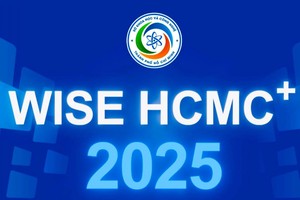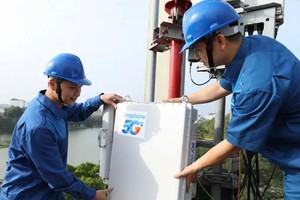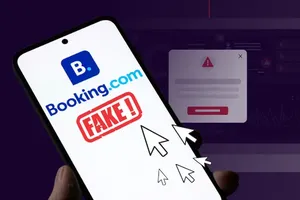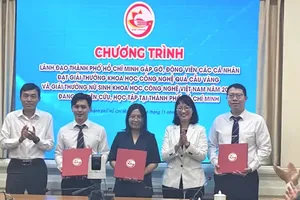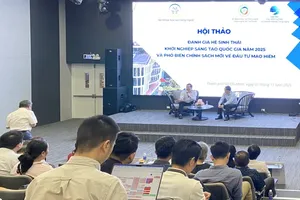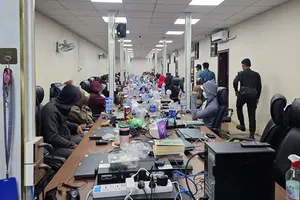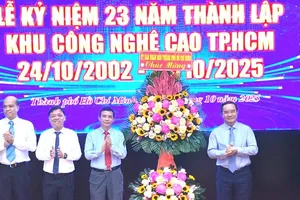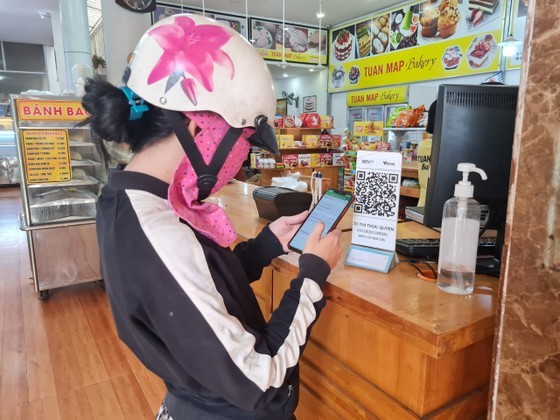 |
Paying via a QR code helps to reduce time and minimizes personal information leaks (Photo: SGGP) |
When Apple pay, an online payment service popular in various countries, was launched in Vietnam, the cashless payment market has become even more bustling. Vietnamese users can now use the service to link to their Visa cards issued by Tien Phong Bank (TPBank), Techcombank, and MBBank.
Hoang Van Son from District 3 of Ho Chi Minh City eagerly shared that using Apple pay is much safer than using his own debit or credit card. Each transaction via this app requires authentication by Touch ID, Face ID, or a PIN code. The card number and full name of app users are not shared with salespeople or stored on any equipment, which improves the information safety level.
Even before Apple pay, Samsung pay has been a common app for Samsung mobile device users to enjoy, with connections to several banks for simple and safe mobile payment methods.
At present, Vietnamese people has a range of choices for cashless payment measures by e-wallets, such as Momo, Zalo pay, Vnpay, SmartPay, Shopee pay. Mobile banking has become popular among smartphone users who install a bank app. Experts in the field even predict that payment via a bank card will soon be outdated.
A study by Visa Inc. – a multinational financial services corporation – reveals that the use of cash in Vietnam has remarkably dropped in the last few years, especially after the outbreaks of the Covid-19 pandemic here. There are now 89 percent of Vietnamese consumers owning an e-wallet account and 85 percent prefer to exploit debit or credit cards in their online or contactless payment
Kelvin Utomo, Head of Product and Solutions (Visa Vietnam and Laos), stated that Digital payment, and specifically contactless payment, is a trend that has already become entrenched in much of Asia and is growing rapidly in Vietnam. The Visa payment network has seen a surge of card acceptance equipment and locations. As a result, its total value of card payment transactions in Vietnam last year increased by over 50 percent compared to 2021.
Statistics from the State Bank of Vietnam also show a similar growth in cashless payment. In the first 5 months of this year, compared to this time last year, there were increases of 52.35 percent and 75.54 percent in the number of cashless and Internet transactions, respectively. The figures for mobile phone, QR code, and POS transaction quantities also saw a rise of 64.26 percent, 151.15 percent, and 30.35 percent correspondingly. In contrast, ATM transactions witness a decrease by 4.62 percent in quantity and 6.43 percent in value.
Cashless payment has been so popular in Vietnam thanks to the introduction of suitable policies and projects by Vietnam State Bank. The development of smart phone use in the country also contributes to this payment method. Insider Intelligence predicts that in 2023, the number of smartphone users in Vietnam will reach 63.8 million, a rise of 1.6 percent compared to 2022. This accounts for 96 percent of the total Internet user quantity nationwide.
Statistics from the Telecoms Authority under the Ministry of Information and Communications show that in 2021, there were 91.3 million smartphone subscribers in the whole country. In April 2023, this data grew by 2 million. The proportion of adults using a smartphone is about 73.5 percent.
Dr. Nguyen Quoc Hung, General Secretary of Vietnam Banks Association (VNBA), said that there are about 68.7 million bank accounts in Vietnam now. 70 credit organizations have provided Internet payment services, whereas 36 commercial banks are offering mobile banking. The State Bank of Vietnam has granted a license for 21 non-bank organizations to be a payment intermediary, greatly contributing to promoting cashless payment.






